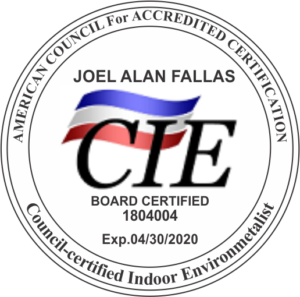Flooded Home Remediation Procedure and Indoor Air Quality Testing:



 We utilize State of the Art Equipment to conduct Complete Indoor Air Quality Testing of the air that you breathe and produce a comprehensive 40-60 page written report of the quality of the air in your residence or building. Victims perform Indoor Air Quality Testing after debris and dust are removed and the residence or building has been dried out to proper standards. Complete Indoor Air Quality Testing should be done before rebuilding commences. Indoor Air Quality Testing prevents the possibility of doing double work and saves many thousands of dollars.
We utilize State of the Art Equipment to conduct Complete Indoor Air Quality Testing of the air that you breathe and produce a comprehensive 40-60 page written report of the quality of the air in your residence or building. Victims perform Indoor Air Quality Testing after debris and dust are removed and the residence or building has been dried out to proper standards. Complete Indoor Air Quality Testing should be done before rebuilding commences. Indoor Air Quality Testing prevents the possibility of doing double work and saves many thousands of dollars.
- Before beginning work on a flooded home, obtain proper PPE (Personal Protection Equipment). At minimum, a full face respirator to protect both your eyes and lungs from contamination in the airspace. A moisture meter should also be purchased in order to detect hidden moisture and test materials to be sure that they have been dried to acceptable levels before reconstruction.
- Make sure you are wearing the full face respirator and that it has been fit tested to your face to prevent leakage of contaminated air.
- Ventilate the home and remove all personal belongings. Open windows and doors. Use air movers to ventilate the space. We highly recommend air movers to both dry the home and dilute the concentrations of the contaminants in the air space.
- Remove all porous contaminated material and place in heavy duty plastic garbage bags. Seal and dispose of all bags like any other trash. Solid wood contamination requires sanding down the surface to clean and remove the contamination if the contamination is not too deep. Victims should remove and replace deep contamination with new construction.
- Remove sheetrock or drywall 2 feet beyond any visual contamination.
- Remediators should use moisture meters to determine whether the structures in the home are dried to acceptable levels before reconstruction and also to detect possible hidden moisture. In the case of multilevel homes with 2 or more floors, the higher floors should be thoroughly checked for hidden and visible moisture before reconstruction. The roof of the home should also be checked for leaks and repaired before reconstruction. When hidden moisture is found a small piece of the material should be removed and inspected for microbial growth or unusual discoloration. Upon finding growth or discoloration, the material must be removed and replaced. If no growth or discoloration is present further drying will be necessary to achieve proper moisture levels.
- After complete drying of the home and removal of all contaminated materials the HVAC system and ductwork should be inspected and cleaned by a Triple AAA Rated Duct Cleaning Company like Extreme Air Duct Cleaning and Restoration Services. which we highly recommend.
- Before reconstruction, flood victims should close up the home and turn on the freshly cleaned HVAC system and turn off all air moving fans as if you were now living in the home. Leave on for at least 24 hours. HVAC system temperature should be set at 70 degrees or cooler to dehumidify the air space.
- Now is the ideal time to do Complete Indoor Air Quality Testing to determine whether the home needs further remediation or is ready to be rebuilt. Complete Indoor Air Quality Testing will determine whether the home is safe to occupy and ready to rebuild!
- “Mold Testing” alone, will not give flood victims the results needed to commence reconstruction!

